Explore Japanese Bunkers And The Forgotten Past Of Japanese Invasion
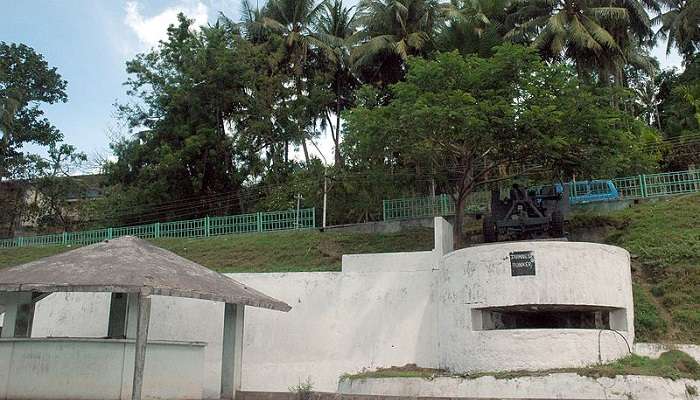
The Japanese Bunkers in the Andaman and Nicobar Islands showcase a dark history that revealed the temporary capture of scenic landscapes and atrocities against Indians. Now etched in the islands’ illustrious history, the bunkers are a testament to how time cannot erase it all. These bunkers can be found in various places on the glorious islands, and the government decided to renovate them many years ago. People who come to Andaman witness these bunkers that vary in size and shape but share the goal of the Japanese for protection and surveillance. Today, the bunkers have become an attraction to tourists from all over the globe.
Japanese Bunkers History: Part Of Andaman’s Heritage
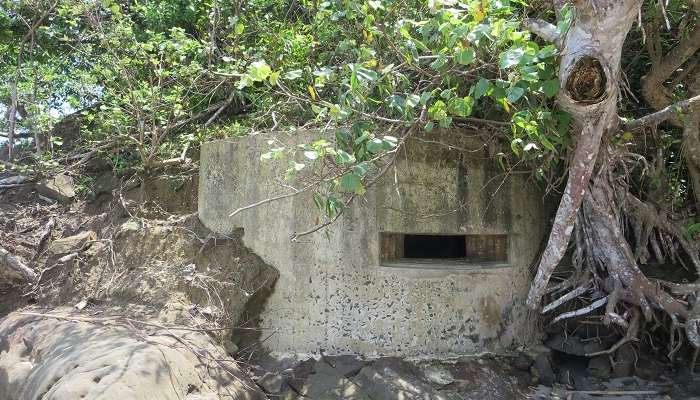
It all started in 1857 when the Indian Rebellion took place. As Indians fought for freedom from the British, the latter decided to subject these freedom fighters to torture, abuse, and jail time. As India was becoming crowded, they chose to build jails in the Andaman, specifically Ross Island, as it was far from the mainland, which made it impossible for prisoners to escape. The British built lavish structures including bungalows, churches, swimming pools, and tennis courts. Even though the pristine waters and the nature were beautiful, it felt like prison even to Britishers.
The jails were functional until 1937, but the British did not budge from the island. This was when disaster struck in the form of an 8.1 magnitude earthquake in 1941. It killed around 3,000 people and destroyed many parts of the islands. The Japanese seized the opportunity and wanted to grab the land for themselves. The Japanese troops were better than the British, and the former eventually took control of the Andaman Islands. After meticulous planning, the army built the Japanese Bunkers in a particular location in the Andaman and Nicobar Islands.
The Japanese stayed in the bunkers until the end of World War II. When India became an independent nation in 1947, Andaman and Nicobar Islands were given to the government. However, the British and Japanese nationals lived on Ross Island well into the 70s. The Ross Island was passed over to the Indian Navy in 1979. Nature has claimed the British buildings by wrapping them in shrubs, vines, and roots. The Ross Island and other places in Andaman with Japanese Bunkers have come a long way as they are quite developed even though the eerie history remains intact with proof of invasion.
Must Read: Cruise To Andaman
Japanese Bunkers Facts: Quick Highlights
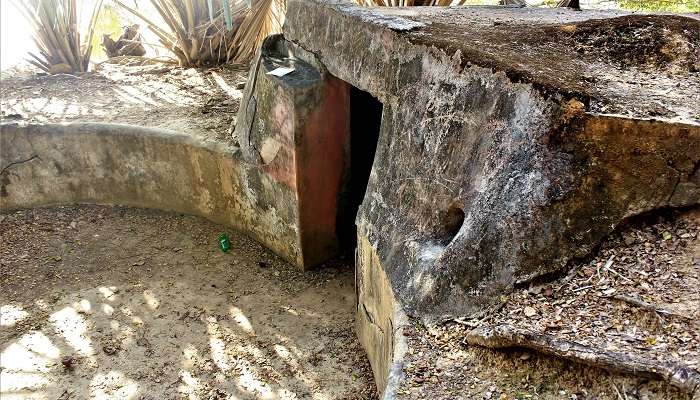
Want to get a quick look at the various Japanese Bunkers facts? Here is a list of the most intriguing facts about Japanese Bunkers in Andaman.
- The Japanese Bunkers Tourism is still valuable to many Indians as it shares the atrocities of the temporary siege of the Japanese on the islands.
- The Japanese Army constructed the Japanese Bunkers between 1942 and 1945.
- The Japanese army subjected Indians on the islands to unbearable torture and brutal murders.
- Indians were killed on account of spying, resisting, and not cooperating with the Japanese forces.
- 44 Indians on the islands were suspected to be spies and were shot dead by the Japanese on January 20th 1944. This incident is called the Homfreyganj Massacre.
- It is believed that around 2,000 Indians in the Andaman and Nicobar Islands died when the Japanese took control.
Places To Visit For Japanese Bunkers Port Blair
Japanese Bunkers were not limited to one island; they were built all over the islands. Three places where visitors can witness these bunkers are Ross Island, Corbyn’s Cove Beach, and Gandhi Park.
1. Netaji Subhash Chandra Bose Island (Formerly Ross Island)

The bunkers on this island are the most famous in Andaman because people from all over the globe come to Ross Island to be amongst the diverse flora and fauna. The bunkers can be found in various locations on the island. You must take a ferry to reach Ross Island, where you will encounter deer, peacocks, birds, lush greenery, and historic ruins. The ruins include old buildings that, despite standing tall, are no match for nature, which has covered them with trees such as peepal.
Suggested Read: Mud Volcanoes
2. Corbyn’s Cove Beach
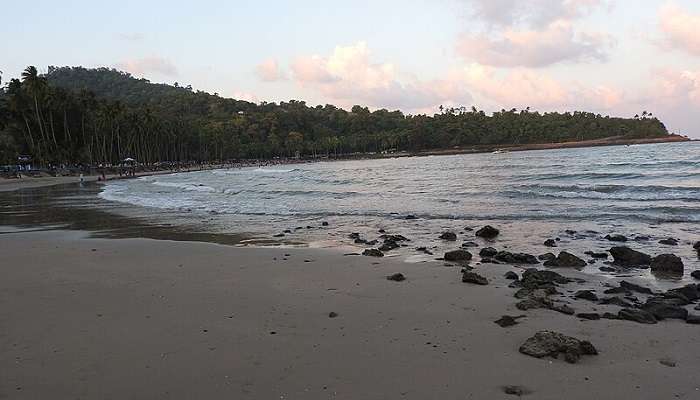
Corbyn’s Cove Beach is known for having all the latest amenities to enjoy swimming, a range of adventures, and connecting with the awe-inspiring nature. It is the second place to find a Japanese bunker near the shore. The beach is full of golden sands, clear heavenly waters, and towering palm trees that sway to the rhythm of the winds. You can also enjoy Snake Island nearby if you want to scuba dive.
3. Gandhi Park
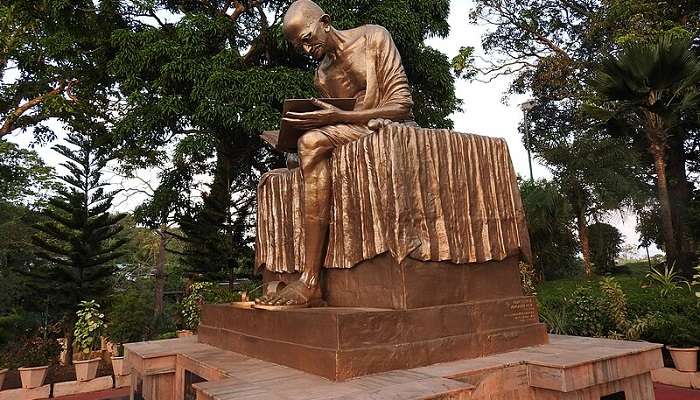
The Gandhi Park was once a place where the Japanese Army took refuge and built a bunker and a temple that remains today. The place is now filled with other happier times with amusement rides, a natural trail, a garden, and water sports for the entire family to enjoy. You can also see the Dilthaman Tank, which was the sole drinking water source for the capital of Andaman and Nicobar Islands. While Gandhi Park
Suggested Read: Festivals Of Andaman And Nicobar Islands
Best Time To Visit Japanese Bunkers And How To Reach
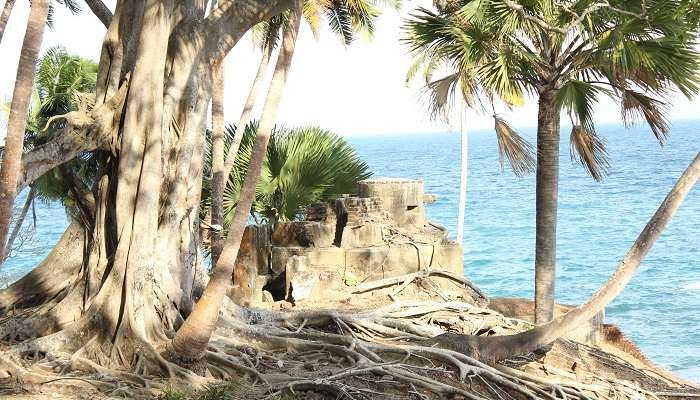
The best time for the Japanese Bunkers to visit the Andaman and Nicobar Islands is between October and April. The climate is nice, generally between 15 and 34 degrees Celsius. This is the optimal time to participate in water adventure sports. The best way to reach the Andaman and Nicobar Islands is by air. Veer Savarkar Airport is the primary airport in the capital. You can hire cabs to visit various places conveniently.
Tips For Travelling To Andaman And Nicobar Islands
Remember these tips when visiting the Andaman and Nicobar Islands to see the Japanese Bunkers.
- Do not throw garbage on the streets, near the beach, or anywhere it should not be thrown. Dispose of them in dustbins.
- Book in advance, especially during the peak season; otherwise, you will miss out.
- There are provisions to rent two-wheelers (such as scooters and motorcycles) if you want to travel independently.
- Rainfall can occur anytime, so be prepared.
- Only book tickets for the ferry, etc., from licensed agents and verify before making any payment to cover more in less time.
Further Read: Things To Do In Andaman
Your trip to Andaman and Nicobar Islands is incomplete without visiting various Japanese Bunkers in Ross Island, Gandhi Park, and Corbyn’s Cove Beach. The history attached to these bunkers is culturally significant, and you can see numerous places near these destinations for the best holiday of your lifetime.
For our editorial codes of conduct and copyright disclaimer, please click here.
Cover Image Source: Jpatokal for wikimedia commons
Frequently Asked Questions About Japanese Bunkers
Is there a fee for Japanese Bunkers tourism?
No, there is no fee to witness the Japanese Bunkers in the various parts of the Andaman and Nicobar Islands.
Did Japan successfully seize Andaman?
Yes, Japan was successful as the Japanese were in charge from 1942 until the end of World War II.
Are there any Japanese Bunkers, Port Blair?
Yes, the Japanese Bunkers are scattered throughout Port Blair and other islands part of the Andaman and Nicobar Islands
Why did the Japanese build bunkers?
They used it mainly for defence and surveillance of the nearby areas so they could attack the enemies.
Why were bunkers invented?
The bunkers were made to keep the people and goods inside them safe from outside attacks and bombings.
People Also Read:
Hotels And Resorts In Andaman Shopping In Andaman Places To Visit In Andaman

Get ready to wander the world through amazing visual tours that we provide via our blogs and stories. As a content writer, I love sharing incredible travel experiences that inspire readers to plan their own adventures and create unforgettable memories. From planning to execution, everything has already been served in these amusing tales. Let’s explore the world together, one destination at a time!











